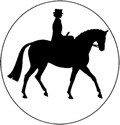The Side Saddle Association is dedicated to promoting and protecting the skill, sport and education of riding side saddle. It has regional areas covering all of the United Kingdom as well as overseas members in many countries.
Through its clear systems and standards for riding, instructing and judging the Association seeks to maintain the highest levels of all aspects related to side saddle.
Members ride a significant range of types and breeds of horse and pony which are often in their second careers and take part in a wide variety of disciplines from showing to Arena Eventing and team chasing. The Association offers members a number of distinct classes including Equitation.
These classes are offered by many shows who affiliate to the Association. The annual three day National Side Saddle Show schedules over 70 classes including our championships and finals.
The association is divided into areas in the UK which offer everyone the help they need and the opportunity to compete, attend clinics and learn the elegant art of side saddle. There is a structured exam system and registers of approved instructors and judges to ensure that standards are maintained.
Contrary to popular belief, riding side saddle is as safe, if not safer, than riding astride. Most equestrian disciplines are open to side saddle riders, and few horses fail to adapt to side saddle. Aspiring side saddle riders find the skills are different, but no harder to acquire.
You will find that most breeds and types of horses and ponies are willing to carry a side saddle, but you are recommended to seek specialist advice from a qualified Side Saddle Association Instructor to get your horse or pony properly introduced to side saddle.
Seminars and training are run throughout the year to enable our members to continually develop their skills in order for them to take part in a wide range of disciplines including Hunting, Hunter Trials, Ridden Hunter Classes, Retraining of Racehorse Classes, Team Chasing, Dressage, Show jumping, Quadrilles and demonstrations to name a few of the activities members participate in.
The National Side Saddle Show, the pinnacle of the Side Saddle Association year takes place every August. There are over 70 classes for side saddle riders. These include showing, dressage, jumping, a HOYS Ladies Hunter Qualifier and the coveted and much sought after Rider of the Year Title is awarded.
New members, both riding and non riding are very welcome; local help, advice and encouragement is readily available. The annual Members’ Handbook contains everything you need to know including competition rules and details for local contacts, qualified instructors, judges and events in each Area, grade tests and examinations. SSA Area officials will be happy to help, contact details can be found on the website on the Areas page.


 Members
Members
 Area Officers
Area Officers
